by Gillian N. Osborne, studio photos by Curtis Hughes // Sept. 12, 2023
This article is part of our collaboration with Berlin Art Week.
Su Yu Hsin’s studio feels like a haven of order and calm in this chaotic city. The space itself is bright and airy, with high ceilings and French windows opening onto the courtyard down below. Sunlight pours into the generous space, which is mostly empty apart from Su’s desk and some electrical equipment. A curtain covers a storage area at one end, hiding any disorder from view.
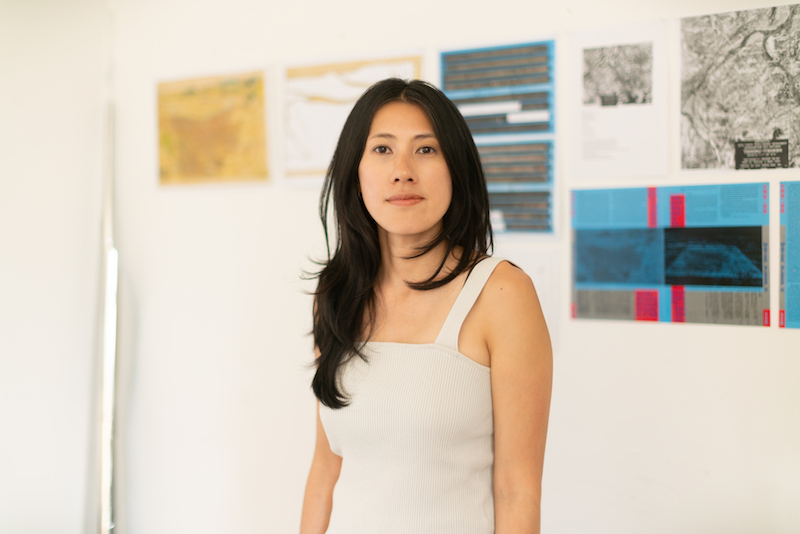
Su’s desk is a pleasure to behold, proffering up a carefully arranged selection of artefacts from her fieldwork, like museum pieces for our delectation. There’s the hydrometer in a metal box, normally used to measure the level of moisture in the air in galleries or museums, with which Su has been experimenting. She’s interested in the way we try to control environments and keep them stable in a fundamentally unstable climate. Or the disc-like object balancing on two blocks, a “dummy wafer” used in the production of semiconductors. There are several kinds of fossil, each showing different stages of the emergence of iron on Earth: one a polished shard with layers of red, orange, and brown; another a black lumpy mass; and finally a round sandy stone with what looks like water ripples forming at its edges. My favourite is a piece of TV rock, or Ulexite, a sort of natural glass-fibre that conducts images onto its own surface. Place the milky white stone onto text or an image, and as if by magic the image is transferred onto the surface of the stone. There’s so much richness here, so much information, texture and history laid out for calm contemplation and deliberation.
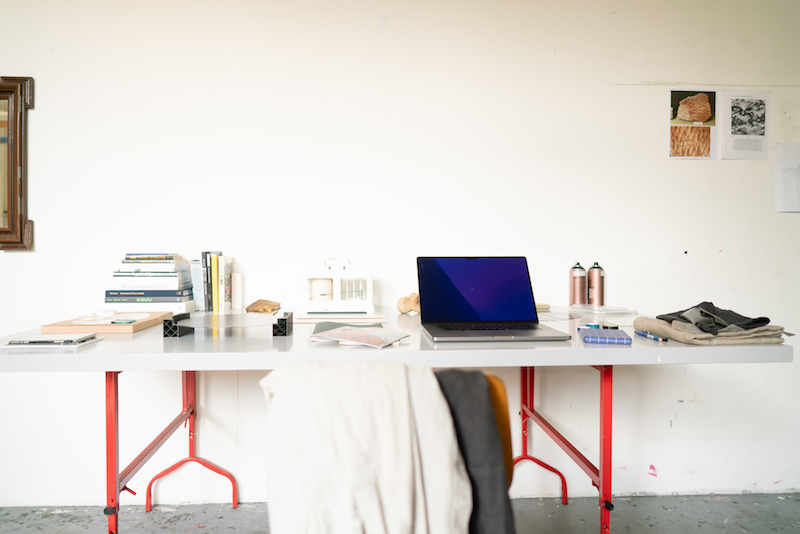
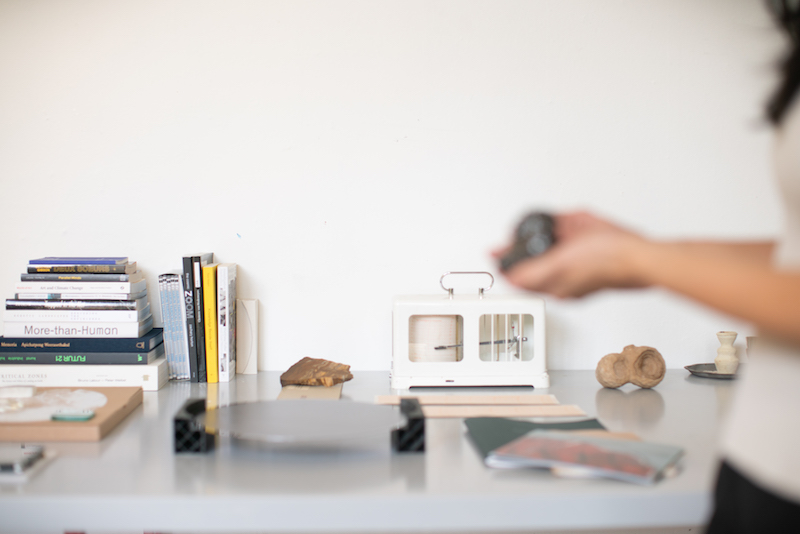
Su tells me that while she researches and edits her films in the studio, a lot of her work is done in the field. A single video work can require one or two years of field research. The artefacts on her desk help to keep Su connected to her field research while she’s working in the studio, reminding her of the various projects she has going on at once. They are arranged, Su explains, to maintain certain connections with each other and with the artist herself. “It’s about a kind of tactile memory,” she tells me.
On the wall of the studio hang several pictures and maps relating to recent and future projects. Many of the images refer to the 2019 work ‘water sleep II Akaike river under Xizang Road,’ in which Su focuses on a river close to her parents’ house in Taipei, which is covered by a main road and thus completely invisible on satellite imagery. There’s a map of the Akaike River and its surroundings before the Xizang Road was built over it, more recent maps of the area and another map from which Su has removed Japanese colonial references and isolated the river itself. There’s a kind of unpicking going on, a removal of layers to get to the heart of the place.
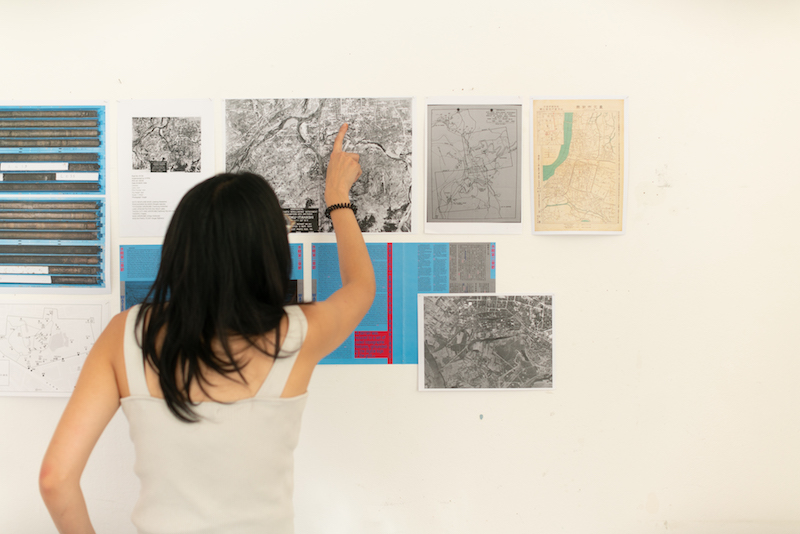
Ostensibly Su’s works focus on the meeting of technology and ecology in a particular geographical location. She looks at the ways in which natural resources are exploited to produce the technology we use in our everyday lives, or how technology is used to explore and measure natural phenomena. But the globalisation of technological production means that her works also address global politics and their effect on local conditions at the same time.
During Berlin Art Week, Su will be showing her latest work ‘Particular Waters’ at C/O Berlin. Indeed, water is a common thread throughout her work: its use, movement, visibility and even its history. Su explains that her fascination with water stems from her own movement through the world. Living in Germany, she noticed that the climate is so much dryer than that of her homeland, Taiwan. It’s the characteristic humidity of the island that she associates with home. Here in Germany, she tells me, it’s “in a summer thunder storm that I really feel at home; the humidity, the sound… it can really feel like Taiwan.” To this end, there’s a sense in which Su’s practice, and her focus on water, is an investigation into her own identity. And the investigation is facilitated by the distance. “The distance helped me to observe the island from further away,” she says, “to see how I identify with it and which elements stay with me.” Su pays attention to the way that water is place-specific, while at the same time a shared resource that ebbs and flows. On some level, water is uncontrollable and belongs to no one; and yet water contains all sorts of biological matter that tells us about its history and specificity—it’s almost never pure, so to speak. Water is coveted and limited and yet abundant and often destructive. It’s this simultaneous particularity and generality of water that makes it such a rich subject of investigation.
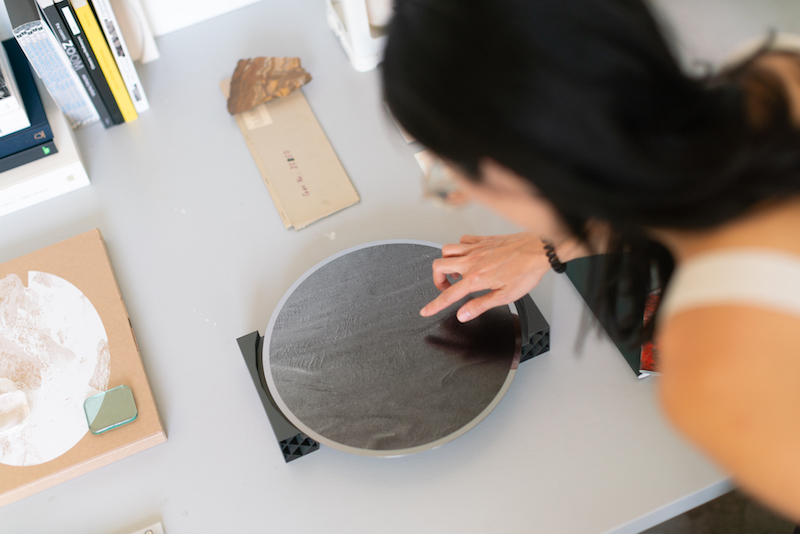
Su’s video works are usually documentary in nature, and she tells me that she is concerned with bringing voices and narratives to light that usually go unseen. “I want to provide a platform for different voices,” she tells me. But more than that, the works should help us form connections, or “be a mediator for certain narratives that are already in those places.” Su’s works touch on the connections between humanity and nature, but also on the conflicts that arise when human striving and the striving of nature work against one another.
But Su’s own presence in her video works is an important element of their structure. This idea is explicitly explored in the two-channel piece ‘frame of reference,’ where a voice asks: “What kind of measurements do we use to perceive, when we are situated inside of the system?” Su explains to me: “I’m very aware of my role as an observer and how I can engage in the network of connection and relation I’m observing. I cannot erase my interference in this process as I am also intervening in this network. One way I try to overcome this is to show the presence of an observer in the work itself.”
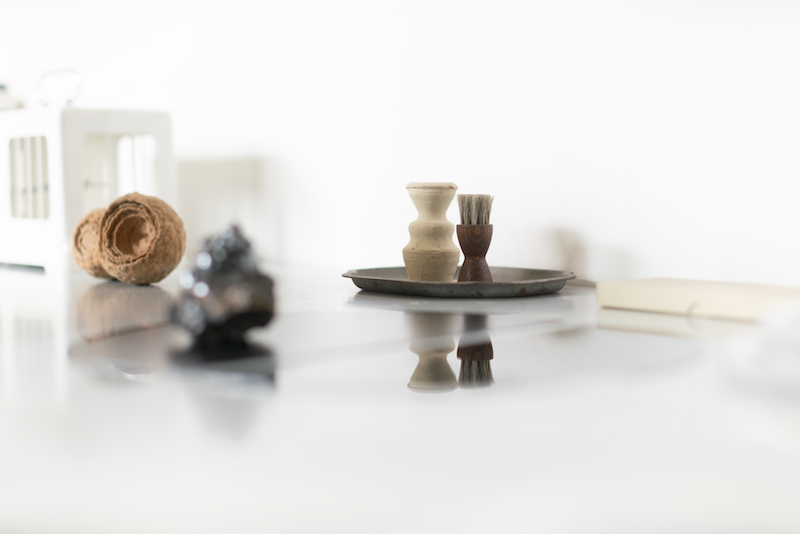
Su also uses fictional elements in her work to address this problem, but also as a way to provide a link between elements of the work. Yet she does so in a way that doesn’t detract from the documentary aspects of her work. These fictional elements often develop out of limitations she faces during her research, for example when informants wish to share their story but prefer to remain anonymous, or when an actor is required to depict parts of the story, for example in ‘Particular Waters.’ “I try to find a mediator in each place,” Su tells me, “a mediator between the systems I am examining. In ‘Particular Waters’ the actor connects the semiconductor production and the water crisis.” But the fictional aspect also, “allows me to position my own view in the film. It allows me to draw another line in this local network.”
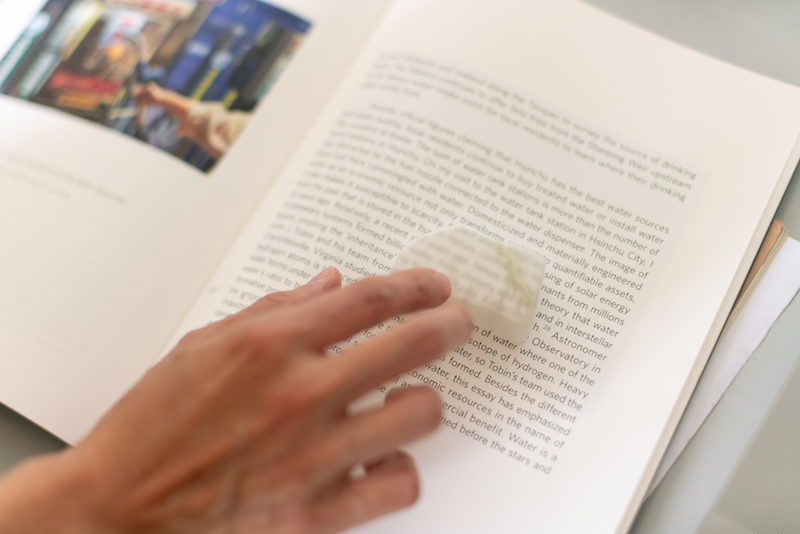
The facts might be altered slightly in order to highlight or develop aspects Su finds relevant, while remaining true to the original narrative. “I don’t want the fictional element to seem staged,” she says, “I want it to highlight a parallel storyline that does exist in reality.” Thus the fictional elements allow for a deepening of certain ideas presented in her works. For example, in ‘Particular Waters,’ Su used a female actor to perform a job usually done by men. Here, she tells me, “I wanted to work with the image of woman’s body as a carrier of water. It was, for me, a way to talk about elemental memory.”
Before I leave, I can’t help asking Su about her stance on climate change, given her focus on global politics and the natural world. Climate change is an “ever-present topic” she tells me, although she doesn’t address it directly in her work. “For me, it’s a question of thinking on a particular scale, how we understand the planet we live on and what our blind spots are. In that sense, I think the interdisciplinarity of my work is an example of how art can bring connections between science and politics to light.”
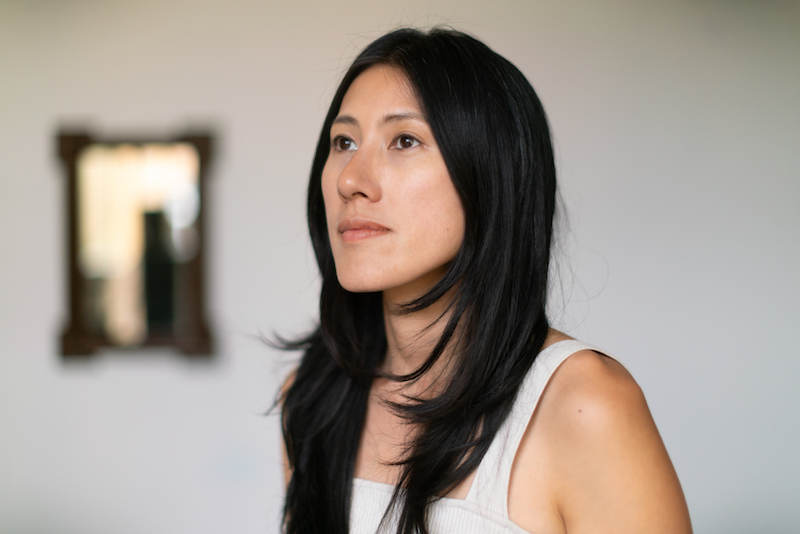
My sense on leaving the studio is that the space directly mirrors the structure of Su’s works: there’s a sense of control, an organisation and order that allows one to look carefully into the finer details of things we often miss or fail to notice. And woven in between is something dreamier, or at least more chaotic and spontaneous, found in the stories and histories of these objects. One gets the feeling that Su is interrogating these objects for the memories they might give up. In giving them a voice, Su is uncovering a shared political and geographical history that continues to unfold, like a river running under a busy road.
Artist Info
C/O Berlin
Group Show: ‘Image Ecology’
Opening Reception: Friday, Sept. 15; 8pm–1am
Exhibition: Sept. 16, 2023–Jan. 18, 2024
co-berlin.org
Amerika Haus, Hardenbergstraße 22-24, 10623 Berlin, click here for map




















